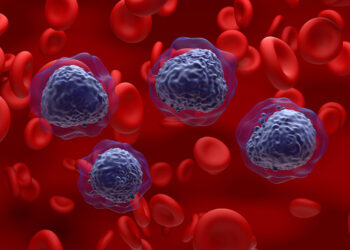Cardiac glycosides derived from the foxglove plant have been used in cardiology for two centuries, but digoxin and digitoxin have gradually fallen out of favor and are now considered controversial in heart failure treatment.
The early rationale for the use of glycosides in heart failure stemmed from the 1997 DIG trial comparing digoxin to placebo — both in combination with standard therapy — in 6800 patients with heart failure. People with reduced left ventricular ejection fraction (HFrEF) who used the drug were less likely to require hospitalization, but the primary endpoint of all-cause mortality did not differ between the two groups.
“Digoxin/digitoxin received a class 1 recommendation in earlier heart failure guidelines, but this has since been downgraded to a weaker class 2b,” in light of therapeutic advances, Gregg Fonarow, MD, told Medscape Medical News.
Can New Study Findings Resurrect an Old Drug?
Heart failure medications have evolved substantially in the quarter-century since the DIG trial, said Fonarow, who directs the Ahmanson-UCLA Cardiomyopathy Center and is the co-director of UCLA’s Preventative Cardiology Program. Two new trials are reexamining digitoxin and digoxin to see if they offer any benefit over and above the “fantastic 4” of heart failure pharmacotherapy: Angiotensin receptor-neprilysin inhibitors (ARNI), beta-blockers, mineralocorticoid receptor antagonists (MRAs), and SGLT2 inhibitors.
At this year’s Heart Failure Association of the European Society of Cardiology (HFA-ESC) 2025 in Belgrade, Serbia, investigators reported early data from the DIGIT-HF trial, which is comparing digitoxin or placebo in combination with guideline-directed therapy in 1212 patients with symptomatic HFrEF.
“We started DIGIT-HF to demonstrate whether digitoxin at low serum concentrations improves outcomes on top of a modern guideline-directed medical therapy and to show that the use of digitoxin is safe,” lead investigator Udo Bavendiek, MD, told Medscape Medical News. “The latter is of particular importance because cardiac glycosides are needed for effective frequency control in patients with atrial fibrillation and HFrEF when beta-blocker treatment alone is not enough for effective rate control.”
Results should arrive later this year, but Bavendiek, of Hannover Medical School in Hannover, Germany, said the study population is more complex relative to the subjects in pivotal trials of other contemporary therapies for heart failure.
DIGIT-HF patients had a “pronounced HF symptomatic burden,” Bavendiek and his co-authors wrote in the European Journal of Heart Failure, but also were receiving “superior implementation of contemporary HF treatment,” including guideline-directed medications: 40% were receiving ARNI, 70% MRA, 64% had a cardioverter-defibrillator, and 25% had received cardiac resynchronization therapy.
If digitoxin shows a benefit in this severely ill population already on optimized therapy, this finding would be of great interest, Bavendiek told Medscape Medical News. So far, use of digitoxin appears safe in this population, with no new safety signals observed. The investigators opted for digitoxin because its hepatic excretion is preferred in patients with impaired kidney function, as opposed to digoxin, which is excreted via the kidneys.
Another ongoing trial with the potential to inform the use of glycosides is the DECISION study of more than 1000 patients with symptomatic heart failure and a left ventricular ejection fraction below 50%. Unlike DIGIT-HF, the DECISION trial uses low-dose digoxin, said lead investigator Dirk Jan van Veldhuisen, MD, of University Medical Center Groningen in Groningen, the Netherlands. This decision was based on sub-analyses of the DIG trial suggesting serum concentrations of digoxin > 1.2 ng/mL were associated with increased mortality, while more favorable outcomes were seen with lower concentrations. In DECISION, the target serum concentration is 0.5-0.9 ng/mL The DECISION investigators also enrolled more women to develop a better understanding of the use of digoxin in this population.
Cautionary Tales
The most recent American Heart Association guidelines on the treatment of heart failure state glycoside agents can be considered for patients with HFrEF who remain symptomatic despite guideline-directed medical therapy or who cannot tolerate such treatment, with the aim of reducing hospitalizations for heart failure, said Fonarow, who serves as a spokesman for the society.
Outcomes in patients with atrial fibrillation might be of particular interest, Fonarow said. “DIGIT-HF trial randomization was stratified by the presence or absence of atrial fibrillation. As such, this trial will provide important information on the role of this therapy in patients with HFrEF and atrial fibrillation,” he said.
However, many patients in DIGIT-HF were not receiving all of the “fantastic four” therapies at baseline, he added. “For these reasons, the DIGIT-HF trial may not be definitive enough to influence guideline recommendations without confirmation from additional clinical trials.”
Fonarow reported consulting for Abbott, Amgen, AstraZeneca, Bayer, Boehringer Ingelheim, Cytokinetics, Eli Lilly and Company, Johnson & Johnson, Medtronic, Merck, Novartis, and Pfizer. Bavendiek reported receiving travel support and honoraria from Alnylam Pharmaceuticals, Amgen, AstraZeneca, Bayer, Eli Lilly and Company, Novartis, Pfizer, and Vital, and institutional research support from Alnylam Pharmaceuticals.
Katherine Wandersee has more than 30 years’ experience as a medical writer for professional medical audiences.
Source link : https://www.medscape.com/viewarticle/can-cardiologys-oldest-drug-make-comeback-2025a1000gqa?src=rss
Author :
Publish date : 2025-06-24 04:48:00
Copyright for syndicated content belongs to the linked Source.














